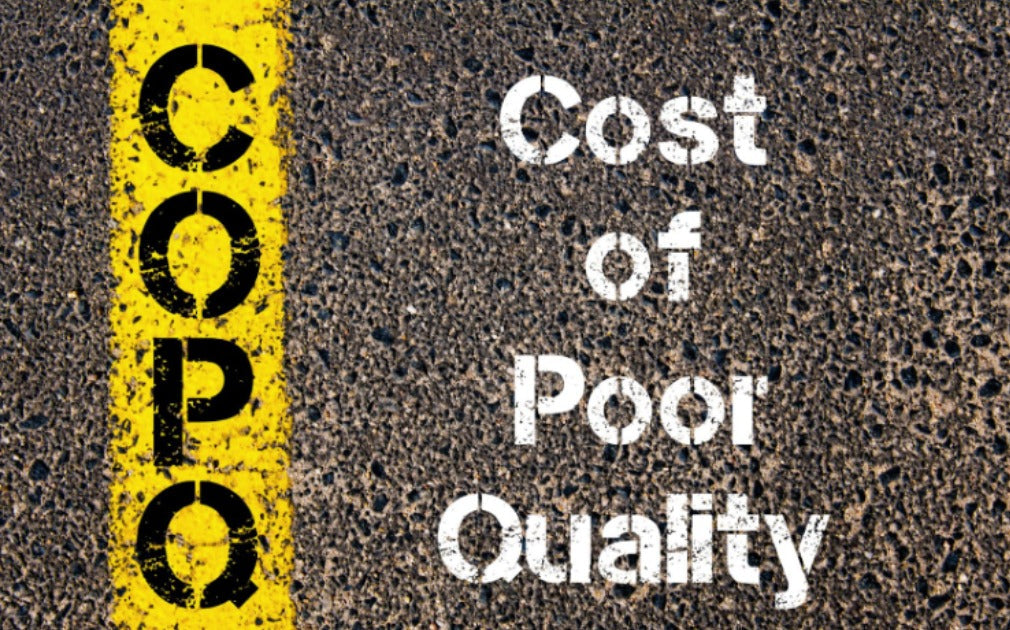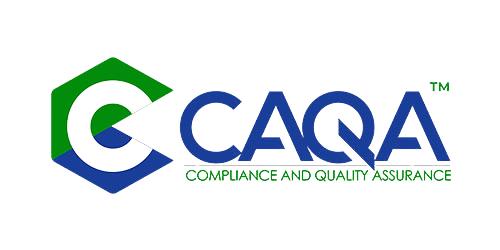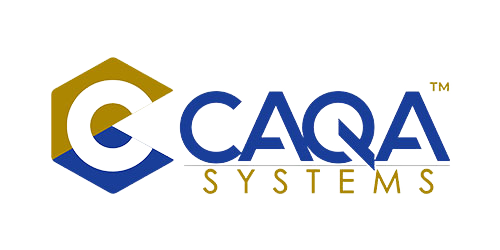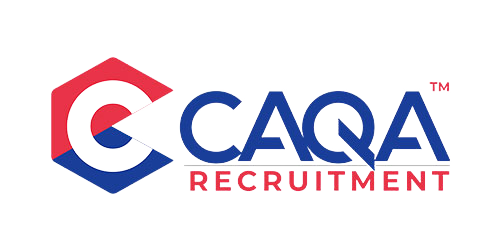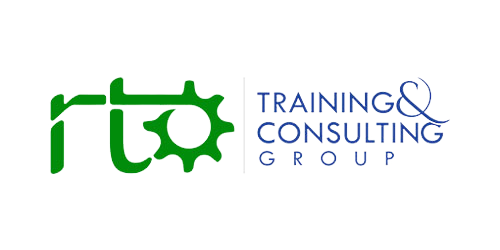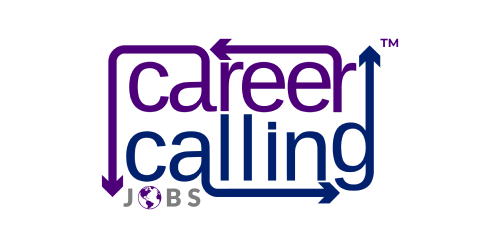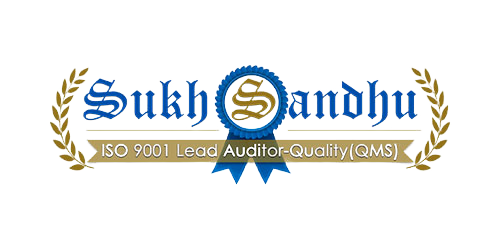THE INVISIBLE EPIDEMIC: UNDERSTANDING THE TRUE COST OF POOR QUALITY
In boardrooms across every industry, executives routinely analyse financial statements, scrutinise operational metrics, and develop strategies to boost profitability. Yet many remain blind to one of the most significant drains on their organisation's resources—the Cost of Poor Quality (COPQ). This invisible epidemic silently erodes between 15–20% of annual revenue in the average organisation, creating a financial hemorrhage that many companies fail to properly diagnose or address.
The true scope of COPQ extends far beyond visible defects or customer complaints. It represents the total financial impact of quality failures throughout an organisation—from wasted materials and unnecessary rework to warranty claims, damaged reputation, lost business opportunities, and regulatory penalties. While traditional accounting systems excel at tracking direct costs, they often fail to capture these hidden quality expenses, leaving leadership with an incomplete picture of where money is being lost.
The financial impact is staggering. Organisations worldwide lose an estimated $2 trillion annually due to poor quality processes. Manufacturing defects alone cost companies $8 trillion globally each year. In high-profile cases, the consequences can be catastrophic—Toyota's unintended acceleration recall cost over $2 billion, while Samsung's Galaxy Note 7 battery failures resulted in losses exceeding $5.3 billion. Even in less publicised scenarios, the cumulative effect of everyday quality failures can threaten an organisation's viability over time.
What makes COPQ particularly insidious is its compounding nature. Quality failures in early process stages cascade through operations, multiplying costs at each step. A $10 component failure on the production line might cost $100 to rework internally, but if it reaches a customer, the same defect could generate thousands in warranty claims, returns processing, reputation damage, and lost future business. This exponential cost escalation explains why addressing quality at the source yields such significant financial returns.
Beyond direct financial impact, poor quality creates numerous secondary effects that further undermine organisational health. Customer loyalty erodes as inconsistent experiences drive buyers to competitors. Employee morale suffers when staff must constantly address problems rather than create value. Innovation stalls as resources are diverted to firefighting instead of improvement. Market share shrinks as reputation damage influences purchasing decisions. These cascading effects create a downward spiral that becomes increasingly difficult to reverse without systematic intervention.
Understanding the full spectrum of quality costs requires recognising four fundamental categories: internal failures (problems caught before customer delivery), external failures (issues discovered by customers), appraisal costs (inspection and testing to find problems), and prevention costs (investments to avoid quality issues altogether). Each represents a different aspect of quality-related spending, with dramatically different implications for organisational performance and customer satisfaction.
THE FOUR FACES OF FAILURE: CATEGORISING QUALITY COSTS
The Cost of Poor Quality manifests in four distinct categories, each representing different aspects of how quality failures impact an organisation financially. Understanding these categories provides a framework for identifying, measuring, and ultimately reducing quality-related losses.
Internal failure costs occur before products or services reach customers but after resources have been invested in their creation. These costs represent quality problems caught during the production process, including scrapped materials, rework, retesting, production delays, and excess inventory. While catching defects internally is preferable to letting them reach customers, these costs still indicate process inefficiencies that drain financial resources. In manufacturing environments, internal failures typically account for 40–60% of total COPQ, with some organisations spending millions annually on rework alone. A semiconductor manufacturer might scrap $500,000 in materials monthly due to process variations, while an automotive supplier could dedicate entire departments to reworking components that should have been produced correctly initially.
External failure costs emerge when quality issues reach customers, creating some of the most damaging financial impacts. These include warranty claims, product returns and recalls, complaint handling, field service costs, liability claims, and lost sales due to customer dissatisfaction. The financial consequences extend far beyond the immediate costs of addressing the specific failure. Toyota's unintended acceleration issues resulted in a $1.2 billion legal settlement, while Samsung's Galaxy Note 7 battery failures cost over $5.3 billion in recall expenses and lost sales. Even for smaller companies, external failures create disproportionate financial damage—a software company might spend ten times more addressing a bug after release compared to fixing it during development. Beyond quantifiable costs, the reputation damage from quality failures can impact customer acquisition and retention for years.
Appraisal costs represent resources invested in inspecting, testing, and evaluating products or services to ensure they meet quality standards. These include quality control inspections, testing equipment, laboratory services, test materials, and the personnel who perform evaluation activities. While necessary in many contexts, excessive appraisal costs often indicate inefficient processes that require constant checking rather than producing quality consistently. A typical manufacturer might spend 10–15% of operational costs on inspection activities that add no direct value to products. Interestingly, as process quality improves, organisations can often reduce inspection costs without increasing failure rates, creating a double financial benefit through process improvement.
Prevention costs encompass investments made to avoid quality problems before they occur. These include quality planning, process design, preventive maintenance, supplier quality management, and training programs that build quality capabilities. Unlike the other categories, prevention costs represent investments rather than losses, typically yielding significant returns through reduced failures. Studies consistently show that every dollar invested in prevention can save $5–$10 in failure costs. Despite this compelling return on investment, many organisations underinvest in prevention, allocating less than 10% of their quality budget to preventive activities while spending the bulk on inspection and failure management—a financially counterproductive approach.
The distribution of costs across these categories provides insight into an organisation's quality maturity. Less advanced organisations typically show high external and internal failure costs with minimal prevention investment. As quality systems mature, the balance shifts toward prevention and away from failures, creating substantial financial benefits. This transition doesn't happen automatically but requires deliberate strategy, leadership commitment, and systematic methodologies like Six Sigma to identify and address the root causes of quality failures.
THE DOMINO EFFECT: HOW POOR QUALITY CASCADES THROUGH OPERATIONS
Quality failures rarely exist in isolation. Instead, they create chain reactions that amplify financial impact as they move through organisational systems. Understanding these cascading effects reveals why seemingly minor quality issues can ultimately threaten organisational sustainability.
The multiplication effect represents how quality costs escalate dramatically at each stage of the value chain. Research shows that fixing a defect during design might cost $1, but addressing the same issue during production could cost $10, during final inspection $100, and after customer delivery $1,000 or more. This ten-fold multiplication at each stage explains why early detection—or better yet, prevention—yields such significant financial returns. A software error that would require a simple code fix during development might necessitate a costly emergency patch release, customer support responses, and potential data recovery efforts if discovered only after deployment. This multiplier effect means that downstream quality activities like inspection and customer service are inherently more expensive and less effective than upstream prevention.
Operational disruption compounds quality costs through schedule delays, resource reallocation, and process inefficiencies. When defects occur, normal operations must often pause while problems are analysed and resolved. This creates a ripple effect of missed deadlines, rushed work (creating more quality risks), overtime costs, and disrupted supply chains. Manufacturing companies report that quality-related downtime can reduce overall equipment effectiveness by 15–20%, representing millions in lost production capacity. Service organisations experience similar disruptions when resources must be diverted to address quality failures rather than creating new value. These operational impacts rarely appear on quality cost reports but significantly affect overall financial performance.
Customer experience degradation creates some of the most significant long-term financial consequences of poor quality. Studies show that customers who experience quality problems are 5–10 times more likely to share negative experiences than positive ones, with each dissatisfied customer telling an average of 9–15 others about their experience. In today's connected world, these negative experiences can spread exponentially through social media and review platforms. Research indicates that acquiring a new customer costs 5–25 times more than retaining an existing one, making customer losses due to quality issues particularly expensive. Even more concerning, 96% of dissatisfied customers don't complain directly to the company—they simply leave, creating silent attrition that may go unnoticed until significant market share has been lost.
Market perception damage extends beyond individual customer experiences to affect broader brand value and market position. Organisations with persistent quality issues find it increasingly difficult to command premium prices, enter new markets, or attract top talent. The reputational impact of major quality failures can depress stock prices, increase borrowing costs, and complicate business development efforts for years. Johnson & Johnson's Tylenol poisoning response in 1982 demonstrated how effective quality management can protect brand value, while more recent cases like Boeing's 737 MAX failures show how quality issues can devastate even the most established brands. This market perception impact creates financial consequences far exceeding the direct costs of specific quality failures.
Employee engagement suffers when workers must constantly address quality problems rather than contribute value. Organisations with high COPQ typically report lower productivity, higher turnover, and increased absenteeism as employees become frustrated with broken processes and constant firefighting. Studies show that companies with chronic quality issues experience turnover rates 15–20% higher than industry averages. The financial impact includes not only replacement costs (estimated at 50–200% of annual salary per departure) but also lost knowledge, reduced innovation, and diminished customer service. Quality leaders like Toyota and 3M demonstrate the positive alternative—when employees participate in effective quality programs, engagement rises along with productivity and retention.
These cascading effects explain why COPQ represents such a significant threat to organisational sustainability. Each quality failure triggers multiple financial consequences that compound over time. Addressing this challenge requires more than isolated quality initiatives—it demands systematic approaches that identify and eliminate the root causes of quality failures throughout the organisation.
SIX SIGMA: THE SURGICAL APPROACH TO ELIMINATING QUALITY COSTS
While many quality methodologies offer benefits, Six Sigma has emerged as particularly effective for reducing COPQ through its data-driven, structured approach to process improvement. Unlike general quality programs that may focus on inspections or standards compliance, Six Sigma systematically targets the root causes of variation and defects, delivering measurable financial returns by eliminating the sources of quality costs.
The DMAIC framework (Define, Measure, Analyse, Improve, Control) provides Six Sigma's structured problem-solving methodology. This systematic approach prevents the common pitfalls of quality initiatives—jumping to solutions without understanding problems, implementing changes without verification, or failing to sustain improvements over time. In the Define phase, projects focus specifically on quality issues with significant financial impact. The Measure phase establishes baseline COPQ data and process performance metrics. Analysis identifies root causes rather than symptoms. Improvement implements targeted solutions with validated effectiveness. Finally, the Control phase ensures changes become permanently embedded in operations, preventing regression to previous practices. This disciplined methodology consistently delivers COPQ reductions of 30–50% in targeted process areas.
Statistical tools enable Six Sigma practitioners to move beyond opinions and assumptions to fact-based decision making. Rather than implementing generic "best practices" or reacting to the most recent quality failure, Six Sigma applies rigorous analysis to identify the vital few factors driving most quality problems. Pareto analysis typically reveals that 20% of root causes drive 80% of quality costs, allowing organisations to focus resources where they'll have the greatest impact. Regression analysis, design of experiments, and hypothesis testing provide objective evidence of cause-and-effect relationships, ensuring improvement efforts address actual causes rather than coincidental factors. This evidence-based approach explains why Six Sigma consistently outperforms less rigorous quality methodologies in delivering financial returns.
Process capability improvement represents one of Six Sigma's most powerful COPQ reduction mechanisms. By measuring and increasing process capability (Cp/Cpk), organisations systematically reduce variation that leads to defects and failures. Traditional approaches might inspect out defects or establish tighter specifications, but Six Sigma fundamentally improves process performance to prevent defects from occurring. A pharmaceutical manufacturer implementing Six Sigma might increase process capability from 2.5 sigma (40,000 defects per million) to 4.5 sigma (1,350 defects per million)—a 97% reduction in defect rates that dramatically reduces scrap, rework, testing, and customer complaints. This capability improvement directly translates to COPQ reduction by eliminating the need for excessive inspection and failure management.
Designed experiments allow Six Sigma practitioners to optimise processes rather than simply fixing problems reactively. While traditional quality approaches often rely on trial-and-error or one-factor-at-a-time testing, designed experiments efficiently identify optimal settings for multiple variables simultaneously. This approach not only improves quality but often enhances productivity, reduces costs, and increases process robustness. A chemical manufacturer using designed experiments might determine the precise combination of temperature, pressure, catalyst concentration, and flow rate that minimises defects while maximising throughput, delivering quality improvements and productivity gains simultaneously. This optimisation capability explains why Six Sigma projects frequently deliver return on investment ratios of 5:1 to 8:1.
Sustainability mechanisms distinguish Six Sigma from many quality initiatives that deliver temporary improvements followed by regression to previous performance levels. The Control phase specifically establishes systems to maintain gains, including statistical process control, mistake-proofing (poka-yoke), documentation updates, training programs, and management reviews. Organisations fully implementing Six Sigma create a quality management infrastructure with dedicated specialists (Black Belts, Green Belts), executive champions, and ongoing project selection processes that institutionalise continuous improvement. These sustainability elements ensure that COPQ reductions become permanent organisational capabilities rather than one-time events, creating compounding benefits over time.
CASE STUDIES: SIX SIGMA'S IMPACT ON QUALITY COSTS
The effectiveness of Six Sigma in reducing COPQ is perhaps best illustrated through real-world examples across various industries. These case studies demonstrate how the methodology translates quality improvements into substantial financial returns.
GE Aviation's Six Sigma implementation stands as one of the most comprehensive and successful quality transformations in manufacturing history. Over several years, the company saved more than $2 billion by systematically addressing quality issues throughout its operations. One particularly impactful project focused on reducing turbine blade casting defects—a complex manufacturing process with historically high internal failure rates. By applying Six Sigma's DMAIC methodology, teams identified previously unrecognised interactions between material properties, furnace parameters, and cooling rates. Process improvements reduced scrap rates from 27% to less than 5%, generating annual savings of $42 million in internal failure costs alone. External benefits included improved delivery performance and reduced warranty claims as engine reliability increased. Beyond specific projects, GE's cultural transformation shifted resources from appraisal and failure management toward prevention activities, further enhancing financial performance. By the fifth year of implementation, GE Aviation had reduced overall COPQ from 20% to less than 10% of operating costs.
Bank of America demonstrates Six Sigma's effectiveness in service industries, where quality costs may be less visible.


